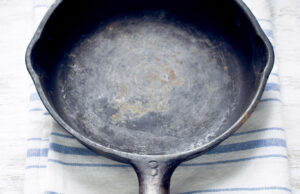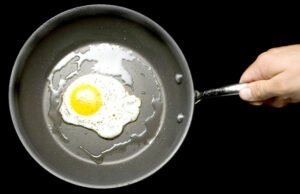As an Amazon Associate, I earn from qualifying purchases at no extra cost to you.
How to Clean Your Dishwasher and Keep It Sparkling Clean
Have you noticed a strange smell coming from your dishwasher? Or maybe it’s not cleaning your dishes as well as it used to? It might be time to give your dishwasher a deep clean! In this article, we’ll show you exactly how to clean your dishwasher and keep it running smoothly. We’ll cover easy steps, helpful tips, and a few tricks that can make your dishwasher look and smell like new again. Let’s dive right in!
Why Cleaning Your Dishwasher is Important
Your dishwasher works hard every day to make your life easier by cleaning your dishes. But over time, food particles, soap residue, and even water deposits can build up inside, causing problems. Cleaning your dishwasher is important because it helps keep the machine running efficiently, prevents bad smells, and ensures that your dishes come out sparkling clean. Plus, regular maintenance can help extend the life of your dishwasher, saving you money in the long run.
Dishwashers have many parts that need attention. These include the filters, spray arms, and the inside of the door. Each part plays a role in cleaning your dishes. If any part isn’t working properly because it’s clogged or dirty, your dishes might not get cleaned well, and you might even end up with spots or streaks. By cleaning your dishwasher, you’re not only improving its performance but also helping it work faster and better.
Step-by-Step Guide to Clean Your Dishwasher
Cleaning your dishwasher might sound like a big task, but it’s actually pretty simple when you break it down into steps. Let’s go over everything you need to do to make sure your dishwasher is in top shape.
1. Clean the Filter
Your dishwasher has a filter that catches food scraps and debris during the wash cycle. Over time, this filter can get clogged, which can affect how well your dishwasher cleans. Luckily, cleaning the filter is easy!
- Locate the filter: The filter is usually at the bottom of your dishwasher, near the spray arm. Check your dishwasher’s manual if you’re not sure where it is.
- Remove the filter: Pull out the filter and shake off any food particles or gunk. You might need to rinse it under warm water to clean it thoroughly.
- Soak and scrub: If the filter is really dirty, soak it in warm soapy water for a few minutes to loosen any tough grime. After soaking, use a soft brush (like a toothbrush) to scrub away any remaining residue.
- Reinstall the filter: Once the filter is clean, place it back in its spot and make sure it’s securely in place.
2. Clean the Spray Arms
The spray arms are the rotating parts inside your dishwasher that spray water onto your dishes. If the spray arms get clogged, your dishes won’t get cleaned properly. Here’s how to clean them:
- Check the spray arms: Look closely at the holes on the spray arms. If you notice any clogs, that means food or mineral deposits have blocked them.
- Remove the spray arms: Depending on your dishwasher model, you may need to unscrew or lift off the spray arms. Check your manual for instructions if needed.
- Clean the spray arms: Use a toothpick or small pin to gently clear out any blocked holes. Rinse the spray arms under warm water to remove any loose debris.
- Reattach the spray arms: Once they’re clean, carefully put the spray arms back in place and make sure they move freely.
3. Clean the Door and Seals
The door and seals of your dishwasher can collect grease, food, and soap scum. These areas are often overlooked, but they play an important role in keeping your dishwasher sealed tight during each cycle. Here’s how to clean them:
- Wipe the door: Use a damp cloth or sponge to wipe down the door, paying special attention to the edges where food can get stuck. You might want to use a mild cleaner to help break down grease.
- Clean the door seals: The rubber seals around the door can trap food particles and moisture, which can lead to mold or mildew. Wipe the seals gently with a damp cloth, and if needed, use a bit of vinegar to clean away any build-up.
- Dry the area: Once everything is clean, use a dry cloth to wipe away any excess moisture from the door and seals. This helps prevent mold and keeps the dishwasher in good condition.
4. Run a Cleaning Cycle with Vinegar
Running a cleaning cycle with vinegar is one of the easiest ways to give your dishwasher a deep clean. Vinegar helps break down mineral deposits, soap scum, and grease that may be left behind. Here’s how to do it:
- Prepare the dishwasher: Remove any dishes or racks inside the dishwasher. You want to make sure the dishwasher is empty before you run the cleaning cycle.
- Add vinegar: Place a cup of white vinegar in a dishwasher-safe bowl or cup. Put the bowl on the top rack of your dishwasher. You don’t need to add any detergent—just the vinegar.
- Run the cycle: Run the dishwasher on the hottest setting. The vinegar will help dissolve any build-up inside the dishwasher, leaving it fresh and clean.
- Wipe the interior: After the cycle finishes, open the dishwasher door and wipe down the interior with a cloth. This will help remove any remaining debris or moisture.
5. Run a Second Cycle with Baking Soda (Optional)
For an extra fresh touch, you can run a second cleaning cycle with baking soda. Baking soda helps remove odors and adds a bit of extra sparkle to the inside of the dishwasher.
- Add baking soda: Sprinkle about one cup of baking soda evenly over the bottom of the dishwasher.
- Run a short cycle: Set the dishwasher to a short cycle on the hottest setting. The baking soda will help freshen up the dishwasher and tackle any lingering odors.
- Wipe the interior: Once the cycle is done, give the inside another wipe-down to ensure everything is clean and dry.
Tips to Keep Your Dishwasher Fresh and Clean Longer
Now that you’ve deep cleaned your dishwasher, you might be wondering how to keep it clean for longer. Here are some simple tips to maintain your dishwasher’s freshness and performance:
- Clean the filter regularly: Make it a habit to check and clean the filter once a month. This will prevent food particles from building up and keep your dishwasher running smoothly.
- Use the right detergent: Make sure you’re using a high-quality dishwasher detergent that’s suitable for your machine. Avoid using too much detergent, as this can leave behind soap residue.
- Check for leaks: Regularly inspect your dishwasher’s door seals to make sure there are no leaks. If you notice any damage, replace the seals to avoid water damage or mold growth.
- Don’t overload the dishwasher: Overloading your dishwasher can cause the spray arms to get blocked, and your dishes won’t get cleaned properly. Make sure there’s enough space between each item for the water to flow freely.
- Use the right water temperature: For the best cleaning results, set your dishwasher to use the hottest water setting available. This helps dissolve grease and food particles more effectively.
- Leave the door open: After you run a wash cycle, leave the dishwasher door slightly open to allow air to circulate and prevent moisture buildup. This helps reduce the chance of mold and bad smells.
- Wipe down the door seals: After every few cycles, wipe the door seals with a damp cloth to remove any food debris or moisture that may have collected there.
- Run empty cycles with vinegar: Once every few months, run an empty dishwasher with a cup of vinegar to help clear out any build-up and keep things fresh.
I hope this article helped you learn how to clean your dishwasher easily and keep it in tip-top shape. With just a few simple steps and some regular maintenance, your dishwasher will work like new and keep your dishes sparkling clean. Happy cleaning!
Frequently Asked Questions
Is it safe to use vinegar in my dishwasher?
Yes, vinegar is safe to use in your dishwasher. It’s a natural cleaner that helps remove mineral deposits and soap scum. Just make sure to use it properly by running it through an empty cycle.
Can I use bleach to clean my dishwasher?
While bleach can kill bacteria and mold, it’s not the best option for cleaning your dishwasher regularly. It can damage certain parts of the dishwasher over time. Instead, use vinegar for routine cleaning.
Do I need to remove the racks before cleaning my dishwasher?
No, you don’t need to remove the racks to clean your dishwasher. However, it’s a good idea to remove any food debris from the racks before running a cleaning cycle.
Is it necessary to clean the dishwasher filter?
Yes, cleaning the filter is an important step in maintaining your dishwasher. A clogged filter can cause poor cleaning performance and bad smells. Clean it at least once a month.
Can I clean my dishwasher with just baking soda?
Baking soda alone can help freshen up your dishwasher and remove odors. However, using vinegar for a deep clean is more effective at breaking down mineral deposits and grime.
Do I need to clean the spray arms regularly?
It’s a good idea to check and clean the spray arms every few months. If you notice any clogs, clear them right away to ensure your dishwasher is working properly.
Is it okay to leave the dishwasher door closed after use?
It’s better to leave the door slightly open after you’ve finished using the dishwasher. This helps air out any moisture and prevents mold or mildew growth.
Can I use regular dish soap to clean my dishwasher?
No, you should not use regular dish soap in your dishwasher. It can create too many bubbles and damage the machine. Stick to dishwasher-specific detergent for best results.




